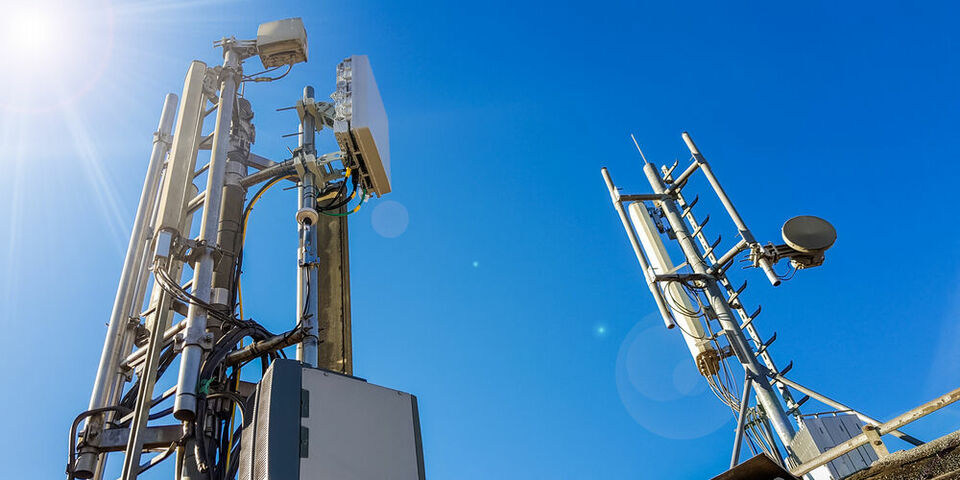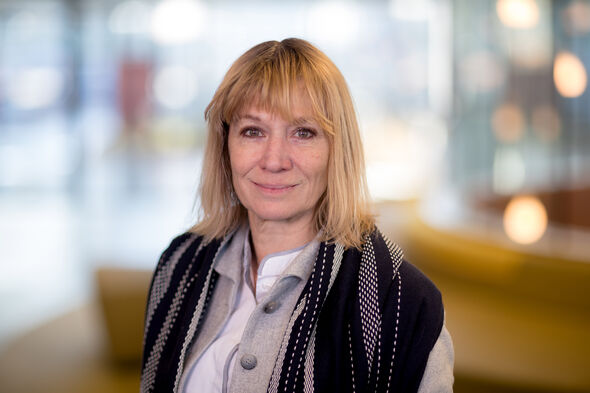Prof talk | A crowded airspace
American airline companies have sounded the alarm about the rollout of the new 5G network. There is concern that certain 5G frequencies might interfere with radio altitude meters and, consequently, with landing systems. Safety first, but it is not a problem that cannot be solved, according to wireless communications experts Sonia Heemstra de Groot and Bart Smolders. Now that frequency bands are becoming overcrowded and the same small spectrum is being used by an increasing number of providers, the time has come for digital regulatory measures.
American airline companies issued a warning last month that the deployment of 5G services by two major telecom operators might spark ‘chaos’ for air traffic. Airplanes might have to remain grounded because the high-speed 5G network could potentially interfere with sensitive equipment, including radio altitude meters. This device transmits radio signals to the ground using an antenna mounted underneath the aircraft’s fuselage. The signal then bounces back from the ground and provides a highly accurate measurement of the distance to the ground. Several flight systems use radio altitude meters, including the automatic pilot, which has become essential during landings in bad weather conditions.
Radio altitude meters operate in the 4.2 to 4.4 gigaHerz (GHz) frequency band. And that’s dangerously close to the 3.7 to 3.98 GHz allocated to two US telecom providers, professor Sonia Heemstra de Groot, director of the Centre for Wireless Technology Eindhoven, explains. Since last year, she has been collaborating with aircraft suppliers Fokker and Collins, among others, in a consortium that seeks to make aircrafts more renewable using wireless communication, since the current 1600 kilos of wires and cables possibly leads to unnecessary fuel consumption. For this reason, she has been following the discussion with interest. “The buffer is rather small, which is why airline companies are afraid of interference that could affect aircraft electronics, or of overlaps in adjacent transmission regions of radio altitude meters.” Therefore, it’s only logical, professor of antenna technology Bart Smolders says, that circles, or buffer zones, have been created near airports to prevent 5G interference by telecom providers operating on the same bandwidth until further research has been done. “The exclusion of all risks is paramount in aviation.”
Increasing speed of data transfer
Radio altitude meters use technology that dates back to a time when frequency bands weren’t nearly as crowded as they are today. But times are changing, Smolders says. “There is an increasing need for mobile communication. Just think of all the people who were forced to work from home during the past year. There is more and more data, which needs to be transferred at an ever-increasing speed. As a result, the airspace is becoming more crowded and congested. Here in the Netherlands, for example, we are about to switch from our current 5G frequency of 700 MHz, to 3.5 GHz. A new frequency band of 3400 to 3800 MHz, with much more capacity, resulting in a higher speed and a range of new possibilities.”
Since telecom providers in Europe were allocated a slightly different frequency band for the rollout of 5G – the 3.4-3.8 GHz mentioned by Smolders – the possible disruption of radio altitude meters won’t be an issue here, Heemstra de Groot says. “The European authority for aviation safety, EASA, says that the buffer between the frequency bands is large enough and that disruption caused by interference or overlap is impossible. In addition, the maximum power of antenna masts permitted in the US is two and a half times higher than in Europe; the higher the power, the more chance you have of overlap. It’s possible to limit the effects of overlap somewhat by using frequency filters, and they’re sometimes used in radio altitude meters as well. But the quality is highly variable and it costs a lot of money to make an adjustment.”
Better agreements
In the Netherlands, Agentschap Telecom has already done some careful research in advance to determine the current users of the 3.5 GHz band, and to identify the systems that could cause any disruptions. There are various interests at stake, which is why Smolders currently advises the government on this issue in his capacity as a member of the independent ‘Advisory Committee 3.5 GHz band.’ “The frequencies that will be used in the Netherlands, are also being used to enable ships at sea to send out emergency signal communication. The satellite station in the village of Burum, Friesland, is connected to a third of global maritime traffic. If something goes wrong, ships can use this system to send out a distress signal. Very important, but at the same time, we need a high-tech digital infrastructure to keep developing our society. We would like to regulate things in a way that is acceptable to all parties.”
Heemstra de Groot and Smolders believe that the time has come for better agreements now that the frequency band is getting more and more crowded. Smolders: “5G bandwidth will be used simultaneously by several telecom providers, and they too can interfere with one another. This can be prevented with an impressive, newly-developed technology known as synchronization, where parties simultaneously agree on when they will start to send and receive signals. You could do the same thing with applications in adjacent frequency bands. Clear rules can prevent a lot of problems. When people first started driving cars, no one talked about right of way yet, but today, a world without traffic lights to synchronize our traffic system is unimaginable.”




Discussion